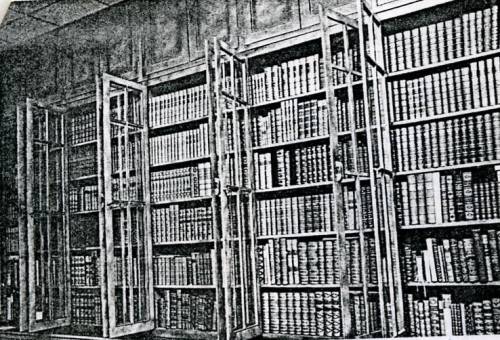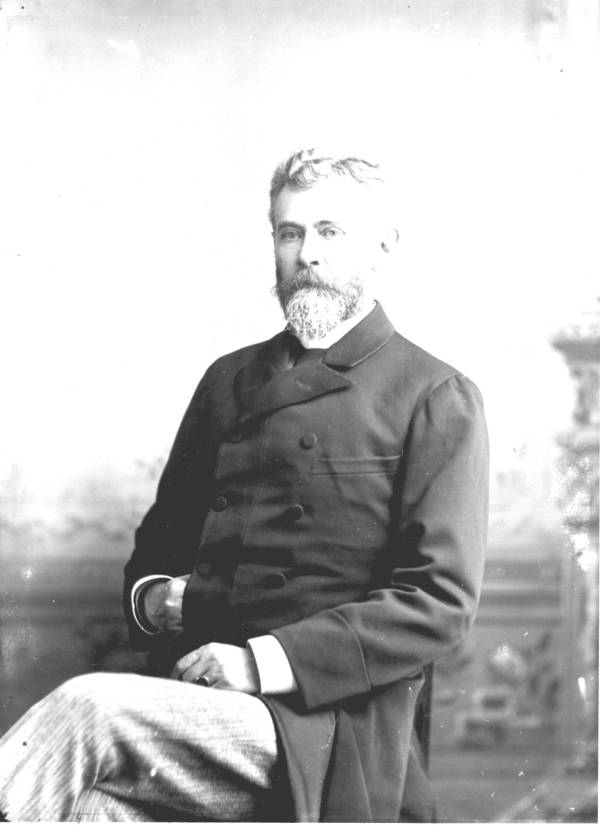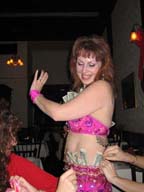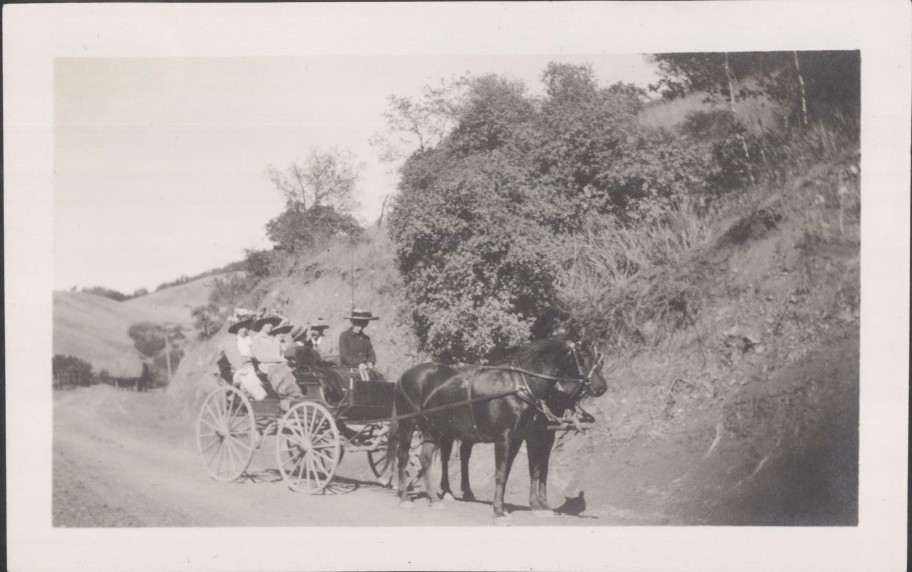Senator Bill Mac Donald (husband of my grandaunt, Kate) of whom I have written in the past,had a son also named William, a bibliophile who made book collecting the all-consuming activity during the last decades of his life. His proudest possession was a Kilmarnock Burns, a first edition published in 1786—entitled “Poems.” The book one of six hundred printed, contains some of Robert Burns' more celebrated poems. Today, there are less than six of the original books in existence and this copy, which is housed in the MacDonald rare book collection at Mount St. Vincent University in Halifax was valued twenty years ago at approximately $10,000.*
*The value today would be much greater than this.

The Collection
I received from the Mount St. Vincent Library a publication (Insight", 1973) which tells about the "MacDonald Rare Book Collection." Part of this material follows, for although rather lengthy, the reader should find it to be an interesting piece of family lore:
“The story of the MacDonald Rare Book Collection, which is the pride of the university library at Mount Saint Vincent began with the friendship of two people, a man and a woman, who never met until they were past sixty, but who were drawn together by a common love of books. Sister Francis de Sales first heard of Mr. William MacDonald through his sister, Sister M. Aquinas, a member of the Sisters of Charity of Halifax, who was well known both for her services to education in the Province of Nova Scotia and as a member of the council general of her congregation.

Through Sister Aquinas, Mr. MacDonald became interested in the Mount Saint Vincent library, and was persuaded to donate part of his family's collection of Canadiana. This gift was made a year or two before the disastrous fire which destroyed Mount Saint Vincent on the night of January 31,
1951. The catastrophe wiped out not only the recent gift of Mr. MacDonald, but the Motherhouse of the Sisters of Charity, the Novitiate, Mount Saint Vincent College, and Mount Saint Vincent Academy. Books, paintings, furniture, and above all, records and documents, were reduced to ashes. Yet, within a year. Mount Saint Vincent College emerged in its first building on campus, Evaristus Hall, which contained the new library.
Apart from her personal loss, Sister de Sales was embarrassed for Mr. William MacDonald, but he, undeterred by the catastrophe, stood by his original intention, and so Sister de Sales could look forward to the fulfillment of her dream. Before long, consignments of cartons from Sydney, Cape Breton, began to arrive at the service door and were unpacked with tender, loving care, and sometimes amazement.
By September 1951 the north wing of Evaristus Hall was ready, and a vast empty space awaited the new library. Sister Francis de Sales had planned every inch of it, the colors and patterns of the doors, the window drapes, the steel cases (shipped from England). With special care she designed the room set aside for the MacDonald Collection. A large square room (26 x 31) to the right of the main library entrance was, under her direction, equipped with cabinets and shelves to hold the "rare books." Now, with the shelves filled, the room is a delight to the eye. Four large windows on the north side give the proper lighting. The woodwork is painted in a light brown with a dull "antique" finish, not unlike the surface of calfskin leather, a tone which harmonizes with the rich bindings in glowing colors that line the shelves. The total effect is restful. Several items are from the MacDonald home in Sydney, the gift of Mr. William himself and his sisters. Dark red drapes add richness to the effect.
Visitors to the Rare Book Room read an inscription on a brass plate on the wall just inside the door, as well as on the door itself:

"GIFT OF MR. WILLIAM MACDONALD OF SYDNEY, NOVA SCOTIA"
and the question usually follows: "Who was Mr. William Mac Donald?"
The answer can best be gleaned from a sheaf of letters which bear dates between 1951 and 1959. The writer of these letters, which are addressed mainly to Sister Francis de Sales, was a bachelor in his late sixties*who occupied a house known as "Brooklands" at 755 George Street, Sydney, along with his two maiden sisters, Katherine and Minnie.

The father of this family elected to the House of Commons in the new-born Confederate Government of Canada at the age of thirty-five, and served as one of the "Old Guard" of Sir John A. MacDonald until 1881. In 1884 he was made a member of the Senate. He died in Glace Bay, July 4, 1916.”
Young William MacDonald followed his father to St. Francis Xavier University,
and after graduation, began a financial career which eventually brought him a fair-sized fortune. Thus, he was able to indulge his two-fold hobby, book collecting and gardening. The joy he found in the garden during the summer months was transmitted during the winter to his delight in books. From 1951 until a few months before his death on September 21, 1959, the Mount Saint Vincent Library occupied most of his thoughts.
He never relaxed in his self-imposed task of selecting, packing, and shipping cartons of books, accompanying each allotment with a sheaf of typewritten notes which describe in detail each volume, sometimes noting the price of a choice item, and here and there adding a shrewd comment. These notes are contained in four volumes of loose-leaf books, which, until the cataloguing is done, constitute the sole source of information as to the nature and the value of the treasures this collection contains. The items are set down in alphabetical order according to author, and exact information is given. The total number of entries, starting with January 28, 1951, is 13,803. Of these, First Editions number 2,873.
“William MacDonald's letters reveal a man clear-headed, systematic, busy, rangy, unprofound perhaps in abstract ideas, but keen, witty, with a dry humor full of crochets. His collection is a mixed bag, some items of mere passing interest, many of rare value, with occasional duplicates. The whole assembly indicates a man of imagination and cultivated, if not sophisticated, taste. He had a typically Celtic penchant for the dreamy, the romantic. The weird and the occult attracted him; tales of fairies, goblins, and ghosts he found irrestible. The Arabian Nights in various editions and translations with exquisite illustrations was a favorite buy. Fairy Tales of various ethnic origin, often beautifully illustrated, form another group. "Queer Books" about queer people—gamblers, thieves and men and women of fantastic tastes and reputation he sprinkled among the serious tomes, with what one might suspect was a mischievous grin. The proportion of Scottish writers indicates a partiality for his "ain folk," with Bobbie Burns leading in numerous editions (notably the Kilmarnock) and Sir Walter Scott a close second. James Hogg, "the Etrrick Shepherd," trails after them, and, of course, Robert Louis Stevenson holds an honored place.
The English Romantics also find generous space, particularly Coleridge, De Quincey and Shelley; and in striking contrast there are the eighteenth century poets and novelists, with heavy emphasis on the journal is"t,—Defoe, Pepys,. John Evelym and above all, Boswell and Sam Johnson. Lovers of the Age of Reason will delight in these rare editions of rare old writers. The seventeenth century, too, is well represented, with John Donne, George Herbert, Robert Herrick, and Andrew Marvel. Apart from an illustrated "Paradise Lost," Milton does not figure largely;
nor does Shakespeare, except for the splendid "limited" editions of individual plays by famous illustrators.
The nineteenth century writers form a considerable array. Among the treasures of the Victorian period are some original editions of Thackeray, Dickens, and George Eliot, in their paper-back magazine form. Late nineteenth century writers occupy a place apart. There are first editions of Hardy and a splendid collection of Oscar Wilde and Aubrey Beards ley. The Yellow Book, too, in its original form and all its volumes, is found here. The moderns also have their place: Conrad, Masefield, Galsworthy, Drinkwater, Walter de la Mare, in complete editions. Then there are the less known but delightful authors: W. H. Hudson, Maurice Hewlett, George Gissing, and others, coming down to D. H. Lawrence and the Sitwells and T. S. Eliot.
An item that attracts the visitor is the array or rare bindings, private presses, autographed copies of limited editions by celebrated illustrators. This section is probably the most expensive part of the collection. Here are volumes that delight the connoisseur, enriched by the hands of such artists as Arthur Rackham, Willy Prgany, Edmund Dulac, Hugh Thompson, Eric Gill, and other famous illustrators. Limited editions from private presses bear such names as Chiswick, Nonsuch, Dropmore, Aldine, Hogarth, Kelmscott, from England;
Cuala from Ireland, and others from France and Italy.
Another striking feature is found in the examples of bookbinding at its finest, in such volumes as a green, hand-tooled morocco binding of a two-volume edition of the Complete Angler, and another of Alice in Wonderland. In the collection, too, are samples of famous book-binders, such as Sangorsky and Sutcliffe.
The curiosity of the visitor is like-wise excited by the collection of fifty-six fore-edge paintings, which exhibit a lost art. When viewed in a normal position, these volumes show a gilt edge which appears slightly discolored.
The surprise comes when the leaves are spread and a delicately wrought painting appears of an English or Scottish scene.
Several of these volumes have a double fore-edge painting; that is, the leaves turned in the opposite direction reveal a second painting. The books which carry these "tricks" are themselves, as a rule, of no special value (excepting one tiny First Edition of Rasselas). Since the art of fore-edge painting seems to have disappeared, these volumes should increase in value as time passes.
Among the most useful items is the collection of books on art and the history of painting, large tomes filled with magnificent illustrations. For the horticulturist there are books on gardening, and for lovers of the sea books on ships.
A price-tag has never been affixed to the MacDonald Collection. Many have wandered past its shelves and a few have browsed through some of the volumes, and could only guess
wildly at its value. Many items, moreover, are still hidden away in the stacks. It will be the task of a skilled cataloger to set the whole in order. When this job is finished these treasures will be available to scholars and students. As to market value, book lovers can only shrug off the question and ask—How do you price a unique book with a "hidden picture" or which bears the name-plate of some once illustrious bookman now forgotten?”
Will must have been an interesting fellow. Readers might wish to visit this collection.
Most of the Senator’s estate was left to Saint Francis Xavier U. Some of his money was used to build a Jr. College in Sydney.
One of my cousins sent me this interesting message and even though I generally don’t put a lot of stock in conspiracy theories, this one makes me wonder:
“Bill told members of the family that Mt. Saint Vincent's College would receive ten scholarships when he died. Well, Monsignor Mc Cleland, President of the St FX, visited the hospital and had the will rewritten on Dec 14th. Bill died on Dec 16th and no one was able to visit him after the 14th. All his money went to St FX. Rene (?) was cut out and so were the scholarships”
Bill Jr., came into the family's wealth apparently only during his latter years. He gave Dick Morley, Pat's son, a 300-year-old first Edition Bible. In turn, Dick would bring him bags of fresh oysters.
William wrote regularly to Sister de Sales. Each letter preceded the mail of another carton of books. The following missile was written when William was 80 years of age, two years before his death:
“755 George Street Sydney, Cape Breton
March 17, 1957
My dear Sister De Sales --
And they're hanging men and women for the wearing of the green. The English will ever find it difficult to answer this. There is no answer.
Tomorrow I send you ten parcels of books.
In this lot, I believe you'll find something to give you considerable satisfaction. I mean the Jesuit Relations— 51 volumes. In the years to come people will be coming to Mount St. Vincent to read and study these books. It may be they are destined to become the jewels of your collection. This set is rather unique in that it was the property of a man who was the British secretary of the society. Certainly they are in splendid condition. It is 2 P.M. and the thermometer outside the window registers 42. Yesterday it went to 62. Considerable snow
remains and I am compelled to say it is quite dirty with no trace of the inviting look of clean snow. In a few days the ground will be bare, but the winter's scum will be still there.
Delighted to hear you are around again. But go slow and be careful about food. I get temple oranges and grapefruit direct from Florida
I drink six oranges every day and the occasional grapefruit. I try to avoid bread. It is the staff of life and is full of calories but I find it puts the weight on, so I am not much of a bread eater.
I had dinner the other evening at our Isle Royale Hotel. Had some very nice scallops, fresh from Digby, but the apple pie and coffee were abominable. Incidentally, the scallop order cost $2.25, a proof of inflation.
I believe we are heading fast for high inflation and the usual depression.
A young fellow who works for the government Welfare Department was in a short time ago. He told me about a home he visited—the home of a widow with four or five children. He did not see a bed in the house. There was a big T.V. machine. Of what use helping people like that.
Best of good wishes,
Faithfully
yours,
Bill”
In other letters to the Sister he mentions that their housekeeper was in the hospital and his sister, Minnie, was the chief cook and bottle washer, "she surely like to work," said he! He also asked the Sister to contact the widow of a Halifax newspaperman who had recently passed away to see if she might, on behalf of Bill, buy the gentleman's “Canadiana”.
He also asks for a receipt for $500 to be used for income tax purposes. Undoubtedly, his contributions served as a sizeable tax write off. He also joked about his sister Minnie's harping re the cold weather.
In another instance he tells about his experience with Bernard Shaw:
“Sometime in 1947 I dug up a book written by Frederick Engels, the man who inspired Karl Marx. On a flyleaf of this book was Shaw's signature.
I was interested. So much that I finally wrote Shaw. . . . Though his letters are very curious, you get a good idea of the venom he could put in his pen. His remarks about the husband of poor Eleanor Marx are not precisely complimentary.
On the cover of a book entitled So This is Shaw by W. R. Titterton, Shaw wrote, "It isn't, but let it pass.
Bernard Shaw."
Bill Jr. must have realized his days were short when he had a serious heart attack a year before his death. He got to the point where he had his book dealers in England send the parcels directly to the college so that he wouldn't have to perform the rigorous work of packing. Until the time of his death he was a frugal man. He often used 75-year-old stationery that belonged to his dad, the Senator. He asked the sister to return the cord used to wrap the book parcels so he could use it again. Up to the time of his death, he had a "Celtic apathy for Englishmen," to use his own words. He felt the English favored the Australians. Although he lost 20 pounds after his coronary, he retained his sense of humor and often quoted jokes to the sister. He preferred MacDonald, not Macdonald, and used the terms Scotch and Scotchman not Scots or Scotsman.
Bill's letters span a period of seven years and portray a fun-loving man, who was tight with the penny like most Scotchmen (or must I say Scots), but who enjoyed life to its fullest.
=========================================================================================

===============================================================================
Navel Maneuvers

*
Cousin John (nee Gillis) Frye's daughter tells us about her interesting avocation, belly dancing.
"I fell into the world of Bellydancing through Career Day in Junior High School.
We were stationed overseas, in Germany, and one of the choices offered for that day was for bellydance.
The other choices? Who can remember?
“Step & Squish” was the move I remember. “Dance arms” out from our sides, one foot steps forward with the ball of the foot, and then you step and squish out the cigarette.
I cannot say if it was the music, the woman who ran the class, or the movements. It must’ve been all factors combined. ..step and squish, step and squish….turn…step and….
This exposure helped feed an appetite I already had for anything Egyptian-related or from ‘the old world’. When we lived in Berlin, Germany, we had the happy fortune to visit the Museum that housed the infamous bust of Nefertiti. I was always drawn to the sculpture – it was as if a hand from the past was reaching out to me. Even now, I have jewelry of her symbolism, (thanks Mom and Dad!), and as a senior in high school, stateside, my rendition of her bust was published in the local newspaper.
Many years later, after my daughter was born, I had the opportunity to take a bellydance class at the local YWCA. There was absolutely nothing that would get in the way of my going to class. I was a happy puppy, soaking up everything that I could. Even my ‘class clothes’ started to turn into costumed pieces. Unfortunately, students were dropping out of class weekly, to the point where I was the only one left. What?! You cannot teach class for one student? Nooooooo!! I tried everything for the teacher to continue; private lessons, anywhere, anytime, all at her convenience. She was not able to do so. And we no longer had classes at the facility. In turn, it closed and became the YMCA, and I had to turn to video instruction to feed my obsession.
Several years passed, and the Internet was really into swing. I found instructors within the New England area and would travel here and there to class with various teachers. All those years of video lessons with no personal instruction helped me form my dance presence. However, it also formed incorrect basic movement. I had to relearn proper form and it was difficult. It took years, but helped instill proper technique and the ability to recognize quickly when my body started to revert to the old ways – now I could catch and correct and truly set the moves in concrete. Years of taking basics and then finally moving up to advanced and then public troupe performance paved the way to my professional performances as well as becoming an instructor of this art myself.
Social stigma remains strong with this art form. It is constantly lumped together with exotic and/or erotic dance. All it takes is a stripper or entertainer of that effect to be wearing a “genie-like” or “bellydance-like” costume, and we suffer the consequences.
It’s unfair and quite brutal to be faced with. In my teaching years, it was initially an uphill battle to bring bellydancing back into the Y. I faced stinging resentment and resistance from the ladies that controlled the counter until finally, the staff changed.
So now we have yoga, hip-hop, ballroom dance, and bellydance!!
To capture the essence of this artform would take years to put into a few words. Bear in mind that this is being presented to you from a person that was and still can be, incredibly shy. I never set out to become a bellydancer or a teacher. It simply just IS. A jewel waiting to be discovered and then enjoyed.
The sounds call to me.
Coming from a Gillis/MacDonald background, the bagpipes have always called to me.
With my Mom being German, it’s a wonderful mix.
Hmm….somewhere we must’ve had a relative that wandered into the Middle-East.
I’ll have to get Dad started on what may be a new discovery. *grin*
Bagpipes and Middle-Eastern music…what a blend. And what a joyful lure."
*Picture from Boston Herald
=========
Scottish Humor
The Scots reputation for being "careful" with money may have originated from the days when most people were poor and needed to watch their pennies. Many Scottish music hall comedians such as Will Fyfe have reinforced the view - despite surveys showing that Scots give to charity more per head than any other part of the UK.
"The Scots have an infallible cure for sea-sickness. They lean over the side of the ship with a ten pence coin in their teeth."
"In some Scottish restaurants they heat the knives so you can't use too much butter."
McTavish broke the habit of a lifetime and bought two tickets for a raffle. One of his tickets won a 1,000 pound prize. He was asked how he felt about his big win. "Disappointed" said McTavish. "My other ticket didn't win anything"
McDougal walked into a fish and chip shop. "I want 10 pence worth of chips, please. I want lots of salt and vinegar on them and two pence worth of pickled onions. And wrap the whole lot in today's newspaper".
You should be careful about stereotyping the Scots as mean. There was a recent letter to a newspaper from an Aberdonian which said "If you print any more jokes about mean Scotsmen I shall stop borrowing your paper."
Have you heard the rumour that the Grand Canyon was started by a Scotsman who lost a coin in a ditch?
After discovering that they had won 15 million pounds in the Lottery, Mr and Mrs McFlannel sat down to discuss their future. Mrs McFlannel announced "After twenty years of washing other people's stairs, I can throw my old scrubbing brush away at last." Her husband agreed - "Of course you can, hun. We can easily afford to buy you a new one now."
As a Christmas present one year, the Laird gave his gamekeeper, MacPhail, a deerstalker hat with ear-flaps. MacPhail was most appreciative and always wore it with the flaps tied under his chin to keep his ears warm in the winter winds. One cold, windy day the Laird noticed he was not wearing the hat.
"Where's the hat?" asked the Laird.
"I've given up wearing it since the accident," replied MacPhail.
"Accident? I didn't know you'd had an accident."
"Yes. A man offered me a nip of whisky and I had the earflaps down and never heard him."
Scotsmen hate to see waste, no matter where it is. So when Jock saw the Niagara Falls for the first time he said it was a waste of water - and a plumber in Dundee could fix them in half an hour.
A Scottish prayer - "Oh Lord, we do not ask you to give us wealth. But show us where it is!"
Angus called in to see his friend Donald to find he was stripping the wallpaper from the walls. Rather obviously, he remarked "You're decorating, I see." to which Donald replied "Naw. I'm moving house."
When a bus company was prevailed upon to increase the concessionary fare to frequent travellers so that they got six journeys instead of four for a pound, one elderly gentleman, renowned for his frugality, even in a community where frugal folk are common, was still unhappy.
"It's all dam' foolishness," he declared. "Now we've got to walk to town six times instead of four times to save a pound!"
Did you hear about the Scotsman who got caught making nuisance telephone calls? He kept reversing the charges.
A Scotsman, an Englishman and an Australian were in a bar and had just started on a new round of drinks when a fly landed in each glass of beer. The Englishman took his out on the blade of his Swiss Army knife. The Australian blew his away in a cloud of froth. The Scotsman lifted his one up carefully by the wings and held it above his glass. "Go on, spit it oot, ye wee devil" he growled.
McNab had become a bit hard of hearing but he didn't want to pay for a hearing aid. So bought a piece of flex, put one end in his top pocket and the other end in his ear. It didn't help his hearing but he found that people spoke to him more loudly.
McTavish took his girlfriend out for the evening. They returned to her flat just before midnight and as she kissed him goodnight she said: "Be careful on your way home. I'd hate anyone to rob you of all the money you've saved this evening."
By mistake, Sandy put a 50 pence coin instead of 5 pence on the collection plate at church. Despite his entreaties, the minister refused to give it back to him. So for the next nine weeks, when the plate was passed round, he passed it on saying "Season ticket."
"Sandy suggested a candlelit dinner last night" Jessie reported to her friend the next day. "That was dead romantic" said her friend. "Not really. It just saved him having to fix the fuse."
Jock asked the bus conductor how much it would cost to travel into town. "80 pence" said the conductor. Jock thought this was a bit steep so he decided to run after the bus for a few stops. "How much now?" he asked. "Still 80 pence". Jock ran after the bus for another three stops and, panting, he asked "How much now?" The conductor replied "90 pence. You're running in the wrong direction!"
MacDonald was awarded 10,000 pounds for injuries received after a traffic accident and his wife got 2,000 pounds. A friend asked how badly injured his wife had been in the accident. MacDonald replied "Och, she wasn't injured but I had the presence of mind to kick her in the leg before the police arrived."
A visitor to an Aberdeen bar was surprised to find the beer only two pence a pint. The barman explained that it was the price to mark the centenary of the pub opening. The visitor noticed, however, that the bar was empty. "Are the regular customers not enjoying the special prices?" he asked. To which the barman replied "They're waiting for the Happy Hour"
It is rumoured that the entire population of Aberdeen took to the streets with an empty glass in their hands when the weather forecaster said there would be a nip in the air.
There was understandable scepticism when it was suggested that Napoleon Bonaparte was the grandson of a Scot from Balloch. But now it has been pointed out that there is further proof that Napoleon was indeed Scots - his hand was always under his lapel, to make sure no-one had lifted his wallet...
-----------------------------------------------------------------------------
Entertainment on the Estrella
A major form of entertainment on the Estrella were dances held in the school house. They often lasted into the early morning hours.Here was a newspaper account of one of these affairs,
“A grand ball was given by the ladies of San Miguel Parish on Thursday, September 29, 1881. No pain was spared in making it a credit to themselves and a source of pleasure to their guests. Clements Orchestra filled the music stand and rendered all the latest music. At 1 o'clock supper was partaken of. The latest strains of the medley were listened to with reluctance at 4 A.M., exactly when all departed for home, expressing themselves as having passed a pleasant evening's enjoyment. Among the ladies present were Mrs. Spever, Mrs. W. M. Jeffreys, Mrs. M. McDonald, Mrs. Fitzgerald, Mrs. G. Davis, Mrs. Wade (Ellen's Mc Adam's cousin) and Mrs. Mahoney.”
Uncle Allen told me that it was common practice to leave a dance at dawn and just return home in time to start the early morning farm chores!
Apparently Allen was quite a prankster, according to Truman McDonald. One of his practical jokes was to wire closed the door of the women's outhouse after a lady entered. They only escaped when
someone found them there.

Another of Alen's pranks was to wait until the early hours when a lot of folks were feeling their drinks; he'd pick one of the best buggies and remove the large back wheels and put them on the front. The smaller front wheels he'd then put on the back. Dan, who told Truman of this trick, said the buggy made a strange sight going down the country road at 2 A.M. The buggy was the most common means of transportation being used as late as 1902. Almost everyone had one. They cost about $25

Another prank Allen performed was to sneak limburger cheese into the dances, pack the cheese into little round pellets and then toss these around the dance hall. He always picked hot nights to do this and as the night wore on, one by one, the couples would evacuate the hall.
Contributions
I remind you readers I am always looking for new copy for future editions. Think about what you might be able to contribute.
Click here for Bill Norin's Home Page









